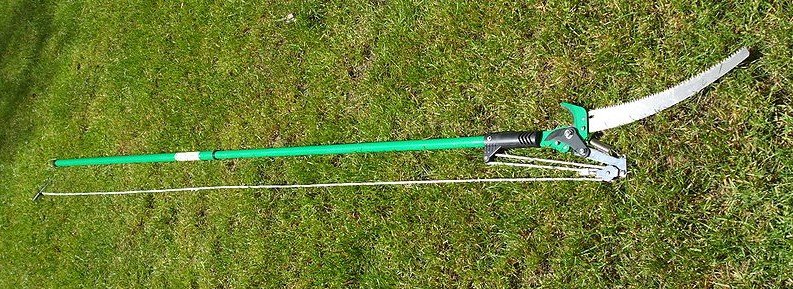A pole saw is a useful tool for your landscaping, only if you know how to make the most of it. Buying an expensive pole saw does not solve the purpose unless you are not capable of using it in the right way. Although there are three types of pole saws like gas, electric and manual .After all, it is a dangerous tool which can hurt the user badly if not used properly. Here are some of the general instructions which one should follow to use the pole saw efficiently and minimizing any potential danger associated with it:
Know your work area and clear it off
Locate the place(s) where you need to work with your pole saw. Ensure that it should not be encroach by the people often. If yes, make arrangements to restrict their entry when you start working. Remove the fallen branches and other obstacle hindering your escape in the area you are going to work, in case of a mishap.
Locate the position for the cut
There are several preliminary and jump cuts before putting in the final cut to cut a single branch. Try to key in the horizontal surfaces of the vine or branch to ensure finer cuts.
Pole-saw position
Lift the pole saw using both the hands and hold it for a minute to control its weight before positioning it to cut spot. Once you have a firm grip, reposition it to the cutting spot and shift the burden to the branch you are intended to cut from above of it.
Self-positioning is very important
It is essential to hold the pole saw at your chest level and should stand-off to the limb side. Position the tool to the branched which is intended to be cut and then adjust to the prescribed position.
Start cutting
The initial cut should be slow, controlled and is perpendicular to the branch. The intention is to create a groove in the branch which can guide you the exact later for the faster strokes. In the case of sloped branches, the saw is expected to slip sideways. Hence, you need to make the strokes in a very controlled way at a slower pace to avoid any mishap.
Finish off the cut
Once the saw is in the groove safely, you can increase the pace to get faster strokes. When the branch is near to the point of falling, keep an eye to rescue yourself securely upon its final fall.
Clean up the work area
Once you are done with the task of cutting, its time to clean up the existing fallen branch to process with the net cutting task. In case you fall, you might trip in the next job due to the current fallen branch.
Important tips to remember:
Always start cutting from the top side, as it eases the process because you are working in conjunction with the gravity and you can transfer the weight of cutting saw on the branch. If you are making a jump cut, you need to apply more energy since you are working against gravity and the whole weight of cutting-saw is over your hands. You can use the pole saw in cutting the water sprouts as well. But cutting the vertical water sprouts are almost impossible to cut them correctly from the ground. Pole saw which comes with the extensions to reach the heights above 8 feet are heavier. It is recommended not to target any branch which is in the vicinity or over the power lines; it may lead to the fatal accident and power shocks. Heavy wood branches are more tiring to work with, but you need to be patient while working with them as these can damage or even kill when falling off.

